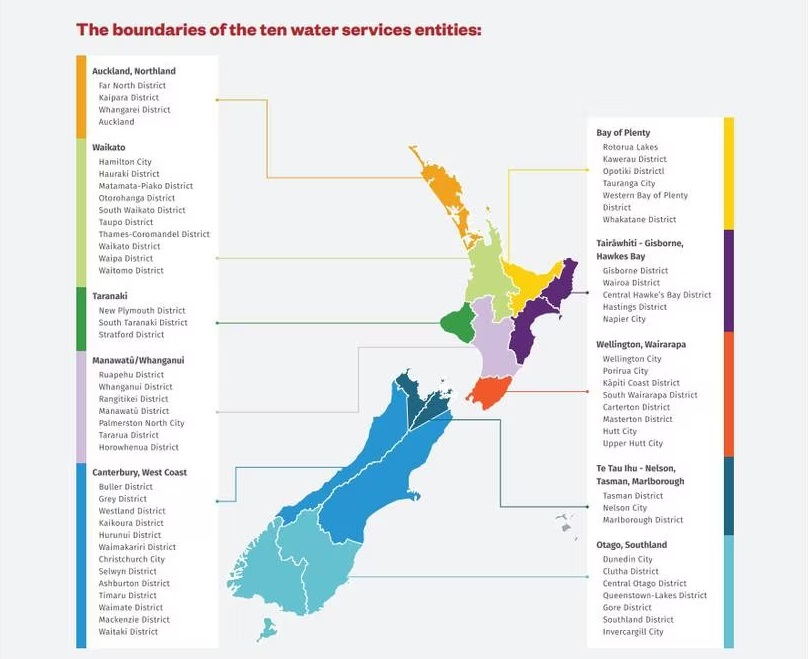Goodbye Three Waters - hello, “Affordable Water Reforms”.
The Government has scrapped a major part of its unpopular Three Waters reforms, ditching the four mega entities that would have delivered Three Waters (freshwater, wastewater, and stormwater) services to households.
These four entities will become 1o entities, with their boundaries established roughly along the lines of New Zealand’s 16 regional councils. The 10 entities will allow local councils more direct engagement with the water entities that will manage water services on their behalf.
The Three Waters reforms were meant to help local councils deal with the eyewatering cost of investment in water infrastructure - estimated to be about $130-$185 billion over the next thirty years.
Modelling commissioned by the Government reckoned those costs would push up household water and rates bills to as much as 1900 to $9000 a year.
Local Government Minister Kieran McAnulty said his model would deliver savings to households of between $2770-$5400 per year by 2054.
“Under our proposal to establish 10 entities New Zealand households will still make big savings, projected at $2770 - $5400 a year by 2054 on average within each region,” McAnulty said.
“By extending the number of publicly owned water entities to 10, every district council in the country will have a say and representation over their local water services entities through regional representative groups, forming a partnership between council representatives and iwi/Māori that will provide strategic oversight and direction to the entities,” he said.
However, one contentious part of the reforms appears unchanged. The entities will be owned by councils via a shareholding. They will report to a local representative group which is jointly comprised of local council representatives (with every council in the country having representation) as well as mana whenua.
The representation on these groups will be split 50-50 between mana whenua and councils - meaning they would be co-governed like the previous model of three waters, or whether this part of the policy has changed too.
 The entities will be run by professional boards, which will report back to the local representative groups.
The entities will be run by professional boards, which will report back to the local representative groups.
“These groups will continue to sit below the governance board, in which each member will be appointed on merit and qualification, but by increasing the number of entities we will be able to ensure the needs of every community, especially small rural towns, are heard and met,” he said.
The Government’s modelling, provided by WICS, the Scottish water provider, had come under intense criticism from detractors of Three Waters Reform.
McAnulty announced today that the Government’s modelling had been peer reviewed by two further consultancies.
“The projected costs have been peer reviewed by both Farrierswier Consulting (an expert Australian regulatory economic specialists) and Beca (a leading international engineering firm) and make for pretty grim reading.
“Leaving councils to deal with this themselves will lead to unaffordable rate rises. It would be setting councils up to fail and I can’t in good conscience do that,” McAnulty said.
The Three Waters reforms were the brainchild of former Local Government Minister Nanaia Mahuta.
McAnulty has been reviewing the reforms since he took over the portfolio from Nanaia Mahuta earlier this year.












